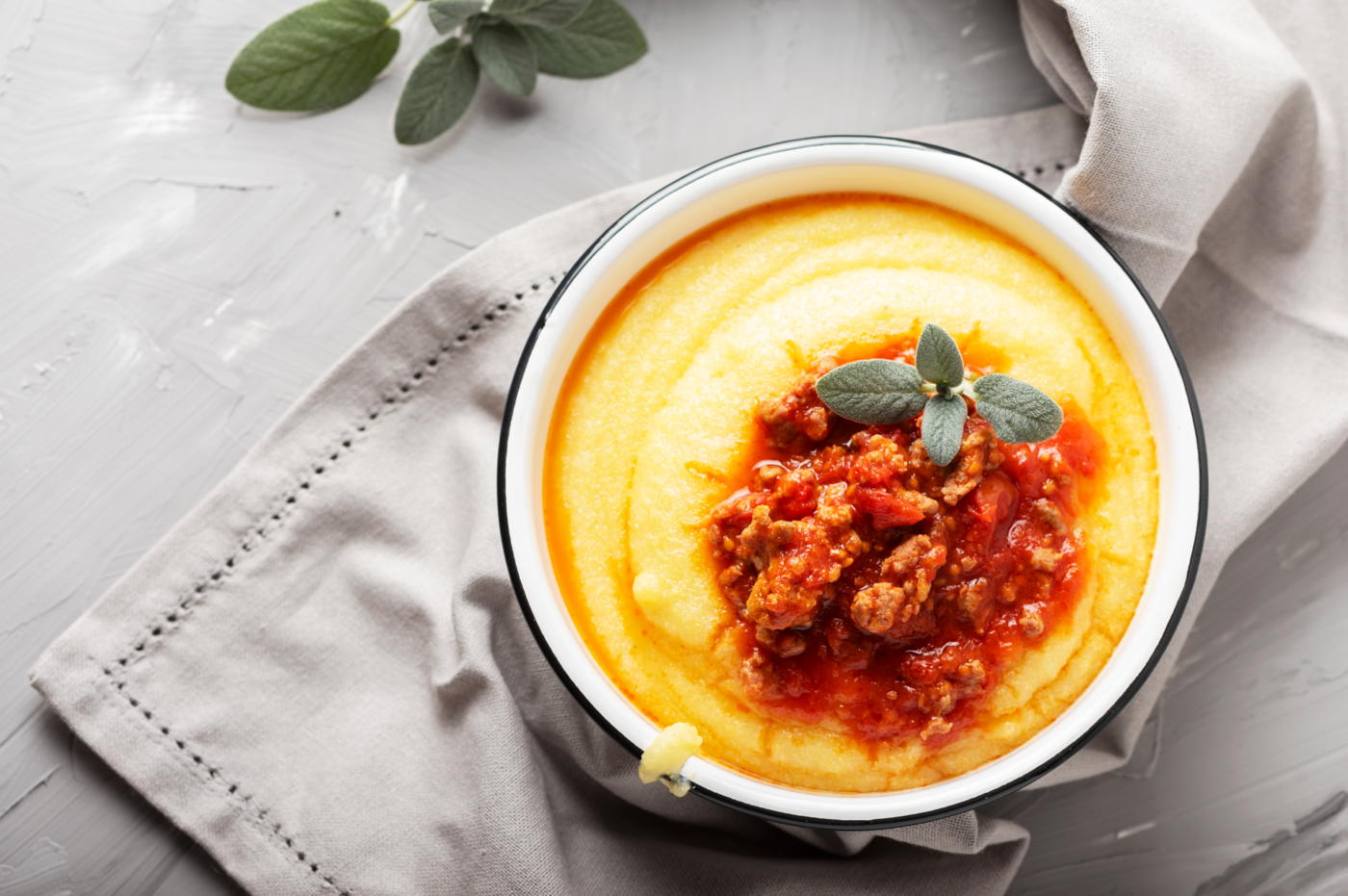History of Polenta
While today it is synonymous with Italian cuisine, its roots stretch back to ancient civilizations. Before the introduction of corn to Europe in the 16th century, polenta was made from other grains like farro, millet, and spelt. With the arrival of corn, particularly in Northern Italy, polenta became a staple food for peasant communities due to its affordability and versatility. It was often served as a simple porridge, accompanied by cheese or vegetables, providing sustenance and warmth during long winters.
Before Corn: The Precursors to Polenta
Long before corn made its way to European shores, the concept of polenta – a porridge made from coarsely ground grains – was already well-established.
Early civilizations embraced the idea of a cooked grain porridge as a source of sustenance and warmth. These early versions were made from grains like farro, millet, spelt, and even chestnuts, offering nourishment in times when food was scarce.
In Roman times, a porridge made from spelt flour called “puls” was a staple food for soldiers and the common people. This can be seen as a direct ancestor of the polenta we know today.
The Corn Revolution: A New World Grain Arrives
The arrival of corn in Europe in the 16th century, following voyages to the Americas, revolutionized polenta.
Initially, corn was primarily used as animal feed. Its adoption as human food was gradual, facing some resistance due to its association with the lower classes.
However, the fertile plains of Northern Italy proved ideal for corn cultivation. By the 17th century, cornmeal polenta had become a staple food in regions like Lombardy and Veneto, replacing other grains as the primary ingredient.
“The Bread of the Poor”: Polenta Sustains Generations
For centuries, polenta was known as “the bread of the poor.” Its affordability and versatility made it a lifeline for peasant communities.
It could be cooked with water or broth, and served hot as a porridge or allowed to cool and solidify, then sliced and fried or baked. It was often paired with simple ingredients like cheese, beans, or vegetables, providing a complete and satisfying meal.
Different regions developed their own unique polenta traditions, incorporating local ingredients and cooking methods. This led to a diverse range of flavors and textures, reflecting the culinary heritage of each area.
From Rustic to Refined: Polenta’s Rise to Fame
In the 20th century, polenta began to shed its image as peasant food and gain recognition for its culinary potential.
Creative chefs started incorporating polenta into their menus, showcasing its versatility and ability to complement a wide range of flavors.
Polenta transitioned from a simple side dish to a star ingredient, appearing in elegant presentations and innovative dishes.
As Italian cuisine gained popularity worldwide, polenta followed suit, becoming a beloved dish in restaurants and homes across the globe.
Polenta Today: Embracing Tradition and Innovation
Today, polenta continues to evolve, embracing both tradition and innovation.
It’s used in countless ways, from creamy porridge to crispy fried squares, and paired with everything from cheese and mushrooms to seafood and meat.
Its naturally gluten-free nature has made it a popular choice for those with dietary restrictions.
Polenta remains deeply rooted in Italian culinary traditions, representing a connection to the land and its history.
A Deeper Dive into Polenta’s World
Beyond its basic form, the world of polenta encompasses a fascinating array of variations and traditions:
Texture is Key: From Creamy to Crumbly
Polenta’s texture can vary significantly depending on the grind of the cornmeal and the cooking method. Coarsely ground cornmeal yields a more rustic, textured polenta, while finely ground cornmeal creates a smoother, creamier consistency. The cooking time also plays a role, with longer cooking resulting in a firmer, more sliceable polenta.
Regional Influences: A Taste of Place
Throughout Italy, different regions have their own unique takes on polenta. In the north, where polenta is a staple, it’s often served firm and sliced, grilled, or fried. In the Veneto region, a yellow corn variety is favored, while in Lombardy, buckwheat is sometimes added for a distinctive flavor. Further south, polenta is often cooked to a softer consistency and served as a porridge.
Beyond Italy: Polenta’s Global Journey
While polenta is deeply rooted in Italian cuisine, its influence has spread far beyond its borders. In Eastern European countries like Romania and Moldova, a similar dish called “mămăligă” is made from cornmeal and often served with cheese, sour cream, or meat. In Brazil, polenta is known as “polenta frita” and is a popular street food, often served with cheese or tomato sauce.
Modern Interpretations: A Culinary Canvas
Today’s chefs continue to push the boundaries of polenta, incorporating it into innovative dishes and flavor combinations. You might find polenta crusted fish, polenta fries with dipping sauces, or even polenta desserts with fruit and honey. The possibilities are endless, making polenta a truly versatile ingredient for the modern kitchen.
Conclusion
Polenta’s journey through time is a testament to its enduring appeal. From ancient grains to modern kitchens, this versatile dish has nourished generations and continues to inspire culinary creativity. Whether enjoyed as a comforting classic or a sophisticated creation, polenta’s story is a delicious reminder of the power of simple ingredients and culinary traditions.

Comments